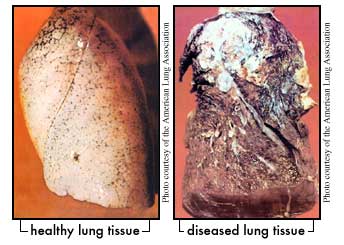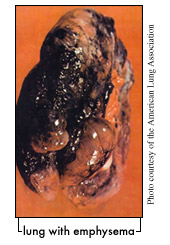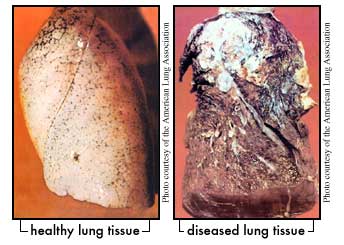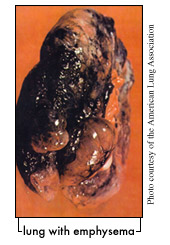


Sports Drinks
There are three types of sports drink all of which contain various levels of fluid, electrolytes and carbohydrate.
Type |
Content |
Isotonic |
Fluid, electrolytes and 6 to 8% carbohydrate |
Hypotonic |
Fluids, electrolytes and a low level of carbohydrate |
Hypertonic |
High level of carbohydrate |
The osmolality of a fluid is a measure of the number of particles in a solution. In a drink, these particles will comprise of carbohydrate, electrolytes, sweeteners and preservatives. In blood plasma the particles will comprise of sodium, proteins and glucose. Blood has an osmolality of 280 to 330mOsm/kg. Drinks with an osmolality of 270 to 330mOsm/kg are said to be in balance with the body's fluid and are called Isotonic. Hypotonic fluids have fewer particles than blood and Hypertonic have more particles than blood.
Consuming fluids with a low osmolality, e.g. water, results in a fall in the blood plasma osmolality and reduces the drive to drink well before sufficient fluid has been consumed to replace losses.
Which is most suitable?
Isotonic - quickly replaces fluids lost by sweating and supplies a boost of carbohydrate. This drink is the choice for most athletes - middle and long distance running or team sports. Glucose is the body's preferred source of energy therefore it may be appropriate to consume Isotonic drinks where the carbohydrate source is glucose in a concentration of 6% to 8% - e.g. High Five, SiS Go, Boots Isotonic, Lucozade Sport.
Hypotonic - quickly replaces fluids lost by sweating. Suitable for athletes who need fluid without the boost of carbohydrate e.g. jockeys and gymnasts.
Hypertonic - used to supplement daily carbohydrate intake normally after exercise to top up muscle glycogen stores. In ultra distance events, high levels of energy are required and Hypertonic drinks can be taken during exercise to meet the energy requirements. If used during exercise Hypertonic drinks need to be used in conjunction with Isotonic drinks to replace fluids.
Want to make your own?
Isotonic - 200ml of orange squash (concentrated orange), 1 litre of water and a pinch of salt (1g). Mix all the ingredients together and keep chilled
Hypotonic - 100ml of orange squash (concentrated orange), 1 litre of water and a pinch of salt (1g). Mix all the ingredients together and keep chilled.
Hypertonic - 400ml of orange squash (concentrated orange), 1 litre of water and a pinch of salt (1g). Mix all the ingredients together and keep chilled.
Alcohol
What Is Alcohol?
Alcohol is created when grains, fruits, or vegetables are fermented. Fermentation is a process that uses yeast or bacteria to change the sugars in the food into alcohol.
When people drink alcohol, it's absorbed into their bloodstream. From there, it affects the central nervous system (the brain and spinal cord), which controls virtually all body functions. Because experts now know that the human brain is still developing during our teens, scientists are researching the effects drinking alcohol can have on the teen brain.
How Does It Affect the Body?
Alcohol is a depressant, which means it slows the function of the central nervous system. Alcohol actually blocks some of the messages trying to get to the brain. This alters a person's perceptions, emotions, movement, vision, and hearing.
When large amounts of alcohol are consumed in a short period of time, alcohol poisoning can result. Alcohol poisoning is exactly what it sounds like — the body has become poisoned by large amounts of alcohol.
Why Do Teens Drink?
Experimentation with alcohol during the teen years is common. Some reasons that teens use alcohol and other drugs are:
- curiosity
- to feel good, reduce stress, and relax
- to fit in
- to feel older
From a very young age, kids see advertising messages showing beautiful people enjoying life — and alcohol. And because many parents and other adults use alcohol socially — having beer or wine with dinner, for example — alcohol seems harmless to many teens.
Why Shouldn't I Drink?
there are some downsides to drinking:
The punishment is severe. Teens who drink put themselves at risk for obvious problems with the law (it's illegal; you can get arrested). Teens who drink are also more likely to get into fights and commit crimes than those who don't.
Drinking can damage a student's ability to study well and get decent grades, as well as affect sports performance (the coordination thing).
You can look really stupid. The impression is that drinking is cool, but the nervous system changes that come from drinking alcohol can make people do stupid or embarrassing things, like throwing up or peeing on themselves. Drinking also gives people bad breath, and no one enjoys a hangover.
Alcohol puts your health at risk. The risk of injuring yourself, maybe even fatally, is higher when you're under the influence. Use of alcohol greatly increases the chance that a teen will be involved in a car crash, homicide, or suicide.
Teen drinkers are more likely to get fat or have health problems, too. One study by the University of Washington found that people who regularly had five or more drinks in a row starting at age 13 were much more likely to be overweight or have high blood pressure by age 24 than their nondrinking peers. People who continue drinking heavily well into adulthood risk damaging their organs, such as the liver, heart, and brain.
Smoking
Almost everyone knows that smoking causes cancer, emphysema, and heart disease; that it can shorten your life by 14 years or more; and that the habit can cost a smoker thousands of dollars a year. So how come people are still lighting up? The answer, in a word, is addiction .
Once You Start, It's Hard to Stop
Smoking's a hard habit to break because tobacco contains nicotine, which is highly addictive. Like heroin or other addictive drugs, the body and mind quickly become so used to the nicotine in cigarettes that a person needs to have it just to feel normal.
Some teens who smoke say they start because they think it helps them look older (it does - if yellow teeth and wrinkles are the look you want). Others smoke because they think it helps them relax (it doesn't - the heart actually beats faster while a person's smoking). Some light up as a way to feel rebellious or to set themselves apart (which works if you want your friends to hang out someplace else while you're puffing away). Some start because their friends smoke - or just because it gives them something to do.
Another reason people start smoking is because their family members do. Most adults who started smoking in their teens never expected to become addicted. That's why people say it's just so much easier to not start smoking at all.
How Smoking Affects Your Health
There are no physical reasons to start smoking - the body doesn't need tobacco the way it needs food, water, sleep, and exercise. For this reason, many people find it takes several tries to get started smoking: First-time smokers often feel pain or burning in the throat and lungs, and some people feel sick or even throw up the first few times they try tobacco.

The consequences of this poisoning happen gradually. Over the long term, smoking leads people to develop health problems like cancer, emphysema (breakdown of lung tissue), organ damage, and heart disease. These diseases limit a person's ability to be normally active - and can be fatal. Each time a smoker lights up, that single cigarette takes about 5 to 20 minutes off the person's life.

Smokers not only develop wrinkles and yellow teeth, they also lose bone density
Smokers also tend to be less active than nonsmokers because smoking affects lung power.
Smoking can also cause fertility problems in both men and women and can impact sexual health in males.
The consequences of smoking may seem very far off to many teens, but long-term health problems aren't the only hazard of smoking. Nicotine and the other toxins in cigarettes, cigars, and pipes can affect a person's body quickly, which means that teen smokers experience many of these problems:
- Bad skin. Because smoking restricts blood vessels, it can prevent oxygen and nutrients from getting to the.
- Bad breath. All those cigarettes leave smokers with a condition called halitosis, or persistent bad breath.
- Bad-smelling clothes and hair. The smell of stale smoke tends to linger - not just on people's clothing, but on their hair, furniture, and cars. And it's often hard to get the smell of smoke out.
- Reduced athletic performance. People who smoke usually can't compete with nonsmoking peers because the physical effects of smoking
- Greater risk of injury and slower healing time. Smoking affects the body's ability to produce collagen, so common sports injuries, such as damage to tendons and ligaments will heal more slowly in smokers than nonsmokers.
- Increased risk of illness. Studies show that smokers get more colds, flu, than nonsmokers. And people with certain health conditions, like asthma, become more sick if they smoke (and often if they're just around people who smoke).
Smoking Is Expensive
Not only does smoking damage health, it costs an arm and a leg. Depending on where you live, smoking a pack of cigarettes a day can cost about $1,800 dollars a year. That adds up. It's money you could save or spend on something for yourself.
Staying Smoke Free
All forms of tobacco - cigarettes, pipes, cigars, and smokeless tobacco - are hazardous. It doesn't help to substitute products that seem like they're better for you than regular cigarettes - such as filter or low-tar cigarettes.
The only thing that really helps a person avoid the problems associated with smoking is staying smoke free.
The good news for people who don't smoke or who want to quit is that studies show that the number of teens who smoke is dropping dramatically. Today, only about 22% of high school students smoke, down from 36% just 7 years ago.
Staying smoke free will give you a whole lot more of everything - more energy, better performance, better looks, more money in your pocket, and, in the long run, more life to live!
What types of fat are there?The nature of the fat depends on the type of fatty acids that make up the triglycerides. All fats contain both saturated and unsaturated fatty acids but are usually described as 'saturated' or 'unsaturated' according to the proportion of fatty acids present. Saturated fats are generally solid at room temperature and tend to be animal fats. Unsaturated fats are liquid at room temperature and are usually vegetable fats - there are exceptions e.g. palm oil, a vegetable oil that contains a high percentage of saturated fatty acids.
What types of carbohydrates are there?There are two types of carbohydrates - starchy (complex) carbohydrates and simple sugars. The simple sugar's are found in confectionery, muesli bars, cakes and biscuits, cereals, puddings, soft drinks and juices and jam and honey but they also contain fat. Starchy carbohydrates are found in potatoes, rice, bread, wholegrain cereals, semi skimmed milk, yoghurt, fruit, vegetables, beans and pulses. Both types effectively replace muscle glycogen. The starchy carbohydrates are the ones that have all the vitamins and minerals in them as well as protein. They are also low in fat as long as you do not slap on loads of butter and fatty sauces. The starchy foods are much more bulky so there can be a problem in actually eating that amount of food so supplementing with simple sugar alternatives is necessary. Eating and CompetitionWhat you eat on a day-to-day basis is extremely important for training. Your diet will affect how fast and how well you progress, and how soon you reach competitive standard. Once you are ready to compete, you will have a new concern: your competition diet. Is it important? What should you eat before your competition? When is the best time to eat? How much should you eat? Should you be eating during the event? In addition, what can you eat between heats or matches?. What do I need to do?Calculate your daily basic and extra requirements, monitor your daily intake (especially your carbohydrates) and then adjust your diet to meet your daily requirements. A good balanced diet should provide you with the required nutrients but does needs to be monitored. The simplest way to monitor the 'energy balance' is to keep a regular check of your weight. Key factors in your training dietEach day have three main meals and two to three snacks. All meals should contain both carbohydrate and protein - 20 to 30 grams worth of protein with each main meal and 10 to 20 grams with each snack. Food Composition TablesFood composition tables are widely used to assess nutrient and energy intakes, and to plan meals. The composition of food can vary widely, depending, among other factors, on the variety of plant or animal, on growing and feeding conditions and, for some foods, on freshness. Tables are based on average values from a number of samples analysed in the laboratory and therefore only provide a rough guide.
Vitamin B1 (thiamine) (water-soluble)
Vitamin B2 (riboflavin) (water-soluble)
Vitamin B12 (water-soluble)
Vitamin C (ascorbic acid) (water-soluble)
Vitamin D (fat-soluble)
Vitamin E (fat-soluble)
Vitamin K (fat-soluble)
Fat LossAlways make carbohydrate intake a priorityIn the early stages of physical adaptation the body will have to, "learn" how to utilise fat as a priority fuel source. This takes some weeks to achieve with regular practice (gym sessions) on cardiovascular exercise. In the meantime, I advise from day 1 that you have sufficient carbohydrate in your diet each day to facilitate energy for doing that initial 20 minutes session. Always remember that fat loss is all about long term goals.Burning fat takes time, but the more you do it the easier it becomes and the greater the amount of fat burned will be. When performing fat burning exercise it takes about 20 minutes for an unconditioned person to actually start burning fat. An average conditioned person will take about 10 minutes, whereas an elite Tour De France athlete takes only about 5 minutes. This is an important fact as it shows that for an unconditioned person, 20 minutes of fat burning exercise is not enough. The aim, therefore, is to progressively and safely reach 45 minutes. It takes a fit person about 11 sessions of a 45 minutes fat burning exercise period to burn 1 lb of fat, which is 3500 kcal. People new to exercise will always take longer. Never eat too littleIt is generally accepted that 1 or 2 pounds is the very maximum amount of fat that you can lose in a week without sacrificing intra-cellular water and lean muscle tissue. In order to achieve this, the maximum calories you can cut from your diet is 1/7 which equals about 15% of the total calorie intake. This limited reduction will also ensure that you lose body fat without slowing down your metabolic rate. Never choose low in fat, always choose low in calorieLow in fat does not equate to low in calorie. A lot of these products are filled with sugar in order to make them taste better. Always check the calorie content to make sure that you are in fact buying something that is low in calorie. Sports DrinksThere are three types of sports drink all of which contain various levels of fluid, electrolytes and carbohydrate.
The osmolality of a fluid is a measure of the number of particles in a solution. In a drink, these particles will comprise of carbohydrate, electrolytes, sweeteners and preservatives. In blood plasma the particles will comprise of sodium, proteins and glucose. Blood has an osmolality of 280 to 330mOsm/kg. Drinks with an osmolality of 270 to 330mOsm/kg are said to be in balance with the body's fluid and are called Isotonic. Hypotonic fluids have fewer particles than blood and Hypertonic have more particles than blood. Which is most suitable?Isotonic - quickly replaces fluids lost by sweating and supplies a boost of carbohydrate. This drink is the choice for most athletes - middle and long distance running or team sports. Glucose is the body's preferred source of energy therefore it may be appropriate to consume Isotonic drinks where the carbohydrate source is glucose in a concentration of 6% to 8% - e.g. High Five, SiS Go, Boots Isotonic, Lucozade Sport. Want to make your own?Isotonic - 200ml of orange squash (concentrated orange), 1 litre of water and a pinch of salt (1g). Mix all the ingredients together and keep chilled What Is Alcohol?Alcohol is created when grains, fruits, or vegetables are fermented. Fermentation is a process that uses yeast or bacteria to change the sugars in the food into alcohol. How Does It Affect the Body?Alcohol is a depressant, which means it slows the function of the central nervous system. Alcohol actually blocks some of the messages trying to get to the brain. This alters a person's perceptions, emotions, movement, vision, and hearing. Why Do Teens Drink?Experimentation with alcohol during the teen years is common. Some reasons that teens use alcohol and other drugs are:
From a very young age, kids see advertising messages showing beautiful people enjoying life — and alcohol. And because many parents and other adults use alcohol socially — having beer or wine with dinner, for example — alcohol seems harmless to many teens. Why Shouldn't I Drink?there are some downsides to drinking: Once You Start, It's Hard to StopSmoking's a hard habit to break because tobacco contains nicotine, which is highly addictive. Like heroin or other addictive drugs, the body and mind quickly become so used to the nicotine in cigarettes that a person needs to have it just to feel normal. How Smoking Affects Your HealthThere are no physical reasons to start smoking - the body doesn't need tobacco the way it needs food, water, sleep, and exercise. For this reason, many people find it takes several tries to get started smoking: First-time smokers often feel pain or burning in the throat and lungs, and some people feel sick or even throw up the first few times they try tobacco.
Smoking Is ExpensiveNot only does smoking damage health, it costs an arm and a leg. Depending on where you live, smoking a pack of cigarettes a day can cost about $1,800 dollars a year. That adds up. It's money you could save or spend on something for yourself. Staying Smoke FreeAll forms of tobacco - cigarettes, pipes, cigars, and smokeless tobacco - are hazardous. It doesn't help to substitute products that seem like they're better for you than regular cigarettes - such as filter or low-tar cigarettes. Are Calories Bad for You?Calories aren't bad for you. Your body needs calories for energy. But eating too many calories - and not burning enough of them off through activity - can lead to weight gain.
That means if you know how many grams of each one are in a food, you can calculate the total calories. You would multiply the number of grams by the number of calories in a gram of that food component. For example, if a serving of potato chips (about 20 chips) has 10 grams of fat, 90 calories are from fat. That's 10 grams X 9 calories per gram. How Many Calories Do Kids Need?We come in all sizes and each person's body burns energy (calories) at different rates, so there isn't one perfect number of calories that a kid should eat. But there is a recommended range for most school-age kids: 1,600 to 2,500 per day. How the Body Uses CaloriesSome people mistakenly believe they have to burn off all the calories they eat or they will gain weight. This isn't true. Your body needs some calories just to operate - to keep your heart beating and your lungs breathing. As a kid, your body also needs calories from a variety of foods to grow and develop. And you burn off some calories without even thinking about it - by walking your dog or making your bed. What Is Stress?Stress is what you feel when you are worried or uncomfortable about something. This worry in your mind can make your body feel bad. You may feel angry, frustrated, scared, or afraid - which can give you a stomachache or a headache. What Causes Stress? Some types of stress are good and others are bad For example, you may do a better job on your book report if the anxiety inspires you to prepare well before you get up and read it to the class. Are You Too Busy?If you're feeling tired and stressed because you have too much going on, like lots of after-school activities, you might feel better if you drop something, even if it's just for a semester or so. On the other hand, if problems at home are bugging you, some (but not too many!) after-school activities may actually help you relax and feel better. Finding a BalanceThe best way to keep stress away is to have a balanced life. That means making good decisions about how to spend your time. If you're only dealing with school stuff and have no time to play, you can get stressed. Make sure you keep your SELF in mind: Sleep, Exercise, Leisure (something fun), and Food. If you take care of yourself and get enough sleep and food, and if you exercise and leave time for fun stuff, you'll probably be less stressed out! What Is CPR?Cardio means "of the heart" and pulmonary means "of the lungs." Resuscitation is a medical word that means "to revive" — or bring back to life. Sometimes CPR can help a person who has stopped breathing, and whose heart may have stopped beating, to stay alive.
Who Should Know CPR? |
Three Parts of CPR
The three basic parts of CPR are easily remembered as "ABC": A for airway, B for breathing, and C for circulation.
- A is for airway. The victim's airway must be open for breathing to be restored. The airway may be blocked when a child loses consciousness or may be obstructed by food or some other foreign object.
- B is for breathing. Rescue breathing is begun when a child isn't breathing. Someone performing rescue breathing essentially breathes for the victim by forcing air into the lungs. This procedure includes breathing into the victim's mouth at correct intervals and checking for signs of life
- C is for circulation. Chest compressions can sometimes restore circulation. Two rescue breaths should be provided and followed immediately by cycles of 30 chest compressions and 2 rescue breaths


